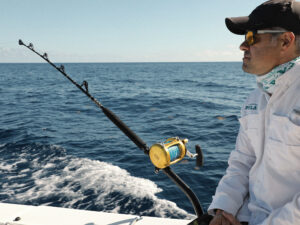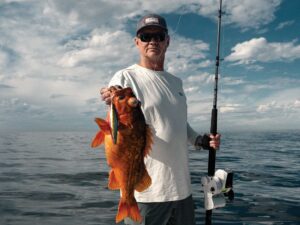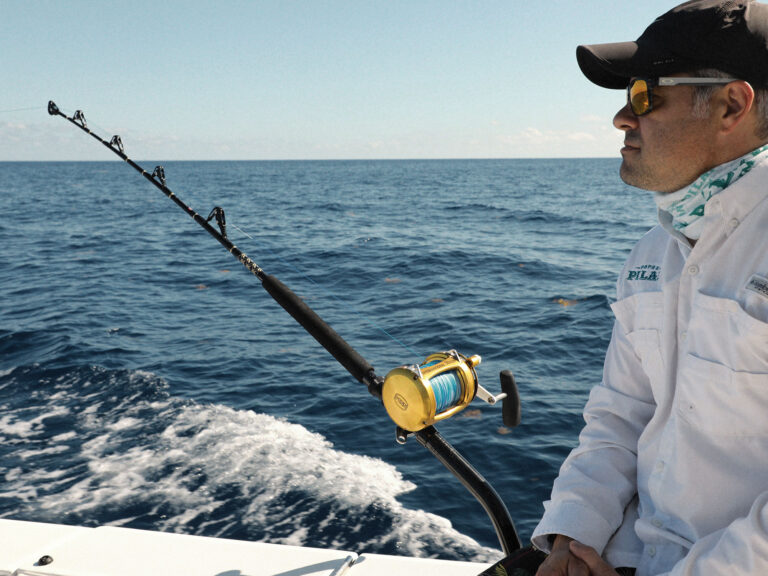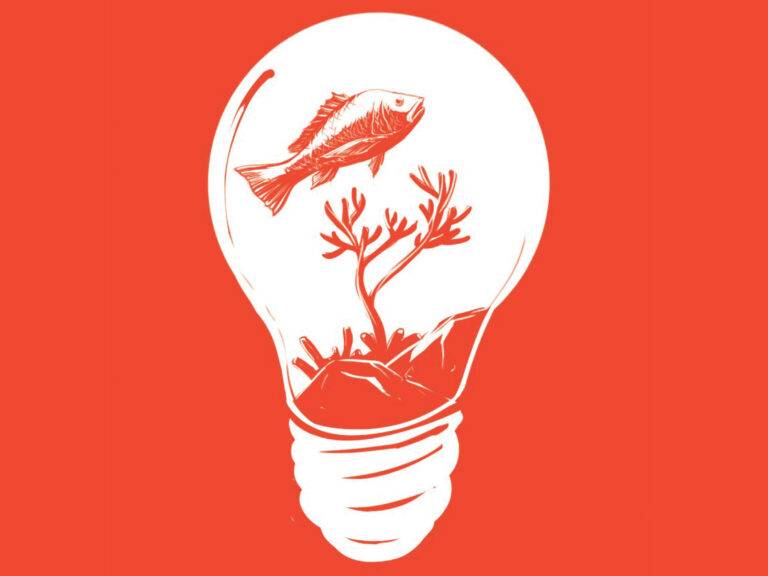
History counts many notable kings on land, but there is only one true king of the sea, and that is the tarpon.
My wife’s late uncle, a Californian, asked if I could put him on a tarpon during a summer visit long ago. Longtime friend Capt. Jim Leavelle offered his boat, tackle and skills, and off we set enthusiastically to nearshore Gulf of Mexico waters.
Sharks ate most of our baits and nearly broke Uncle John’s will. But with precious little time and energy left, a final line came tight, and the long-range tuna fanatic from California took control—then promptly lost it when a basketball-size mouth pushed through the surface.
In a single package, the silver king is massive, unforgivingly powerful and unpredictably explosive.
The fish landed broadside with more of a thud than a splash, then made two more jumps, plowed to the bottom, and dragged 23 feet of loaded boat as effortlessly as a horse pulls a buggy.
Ninety minutes later, John is spent nearly to collapse. His first tarpon is boatside. Estimated weight is 150 pounds, with maybe a few rib-eyes more. Fish this size are rare enough, but the species grows to 100 pounds heavier. I asked three qualified captains (from three qualified regions) for their secrets on how to target these closet doors.
Size Doesn’t Matter
A shared frustration, and I’ve heard it from others over the years, is that it’s difficult to leave the dock dead-set on catching a monster. More often, they’ll tell you that successful days of tarpon fishing include several bites and a few fish brought to hand. If one of those fish is extra-large, all the better. But these fish run in schools that include nearly all sizes, except extreme juveniles that prefer small creeks.
“It’s almost impossible to say, ‘I’m going to catch a big one today,’” says Galveston Capt. James Plaag. “I’ll see a 40-pounder roll, and then a 200 comes up right behind it.”
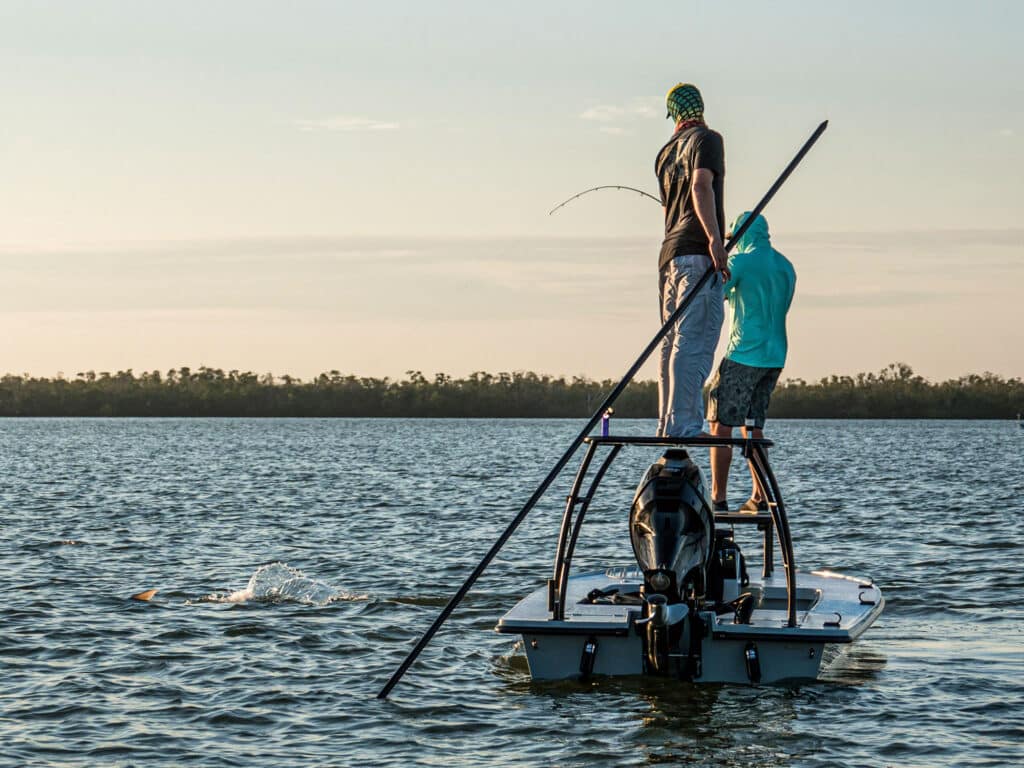
Size Still Doesn’t Matter
South Carolina’s Capt. Steve Roff prefers large baits, including what he calls “good-size” mullet, croakers or menhaden. Even those offerings, though, are not guaranteed to spook any tarpon north of 50 pounds. Aggressive feeders when the bell rings, tarpon in every class will hammer most anything within an open-mouthed tail kick.
Florida’s Mark Bennett says he actually starts big-fish days with small crabs, just as dawn breaks. As the sun gets higher in the sky, the baits get bigger, up to hand-size crabs and mature threadfins.
All three pros agreed on two things that only make the puzzle more complex: Big eats little. And little eats big. Which doesn’t help us. Now, what?
The Reel Deal
Catching a midsize tarpon is easy enough, but if the goal is a beast, rig for beasts.
“If you really want a giant tarpon, rig up like your next bite is going to be a state record,” Plaag says. “You can’t have anyone fishing lighter, trying to be sporty. Soon as you do, that big fish is going to hit that little rod.”
Some pros (Texans) prefer conventional tackle, and others (everywhere but Texas and parts of Louisiana) like spinning gear. Reels of both styles need to hold at least 300 yards of line that, according to my survey, should be 50- to 65-pound braid.
“I like spinning gear because I can throw those little crabs with it,” Bennett explains. Good point.
Bennett likes fluorocarbon in Florida’s clearer water, because it’s tougher against a tarpon’s abrasive mouth.
Read Next: Texas Tarpon Hotspots

Around and Around
Every serious fisherman has a favorite hook, and this trio mentioned several brands. The common threads running through all those hook eyes, though, were size and style. If I heard “seven-ought” once, I heard it a dozen times—that and their collective affinity for circle hooks.
Traditional hooks are tough to set in any tarpon’s rock-hard jaw, but 7/0 circle hooks are nearly foolproof in their ability—unassisted—to passively nestle themselves into a corner of that huge mouth.
They Are Where They Are
Bennett says his biggest tarpon tend to prowl the beachfront in as little as 6 feet of water. Use your electronics to mark fish hugging the bottom. He seldom fishes more than 150 yards from shore, which puts his efforts somewhere in the middle among this three-pack of skippers.
Roff targets washouts where creeks and rivers dump into the bay systems, usually a significant distance from local inlets, although South Carolina inlets also produce quality fish.
Primarily fishing a shallower beachfront that’s normally roiled, Plaag spends more time in 20 to 40 feet of greenish water that can be several miles offshore. Farther south in Texas, where the bottom is distanced from eons of Mississippi River deposits, big tarpon feed around jetties and generally closer to shore.
Suspend Your Disbelief
All three men usually suspend their baits several feet beneath the surface, usually with large slip corks set higher or lower depending on seasonal patterns. All three also free-line baits when conditions call for the change.
Plaag and Roff set baits at widely varying depths, all the way from the surface to the bottom, and let the fish sort it out.
Just Keep Fishing
All three captains have either caught personally or been at the helm when someone else caught tarpon weighing 200 pounds or heavier. After digesting what they shared, it came increasingly clear how this really works.
Tarpon schools range in size from pre-K runts to senior lettermen on the school’s offensive line, and they all eat from the same trough.
The problem with wanting to catch a giant tarpon is that it’s hiding among so many others of all sizes. Success commands that you go tarpon fishing every chance you get, catch as many as you can, and have the patience to stay committed until you get the one you want, however many trips it takes.

